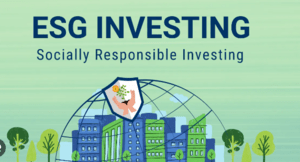Introduction: Redefining Investment Priorities
Impact investing has emerged as a powerful approach to generating financial returns while making a positive social or environmental impact. This article explores the growing significance of impact investing, highlighting opportunities for investors to support businesses and projects that prioritize sustainability and social responsibility.
Opportunities in Impact Investing
- Addressing Global Challenges: Impact investing focuses on addressing pressing global challenges, such as climate change, poverty alleviation, healthcare access, and education. Investors can support innovative solutions and business models that create measurable social or environmental benefits alongside financial returns.
- Growing Market Demand: There is increasing demand from investors, especially millennials and institutional funds, for investments that align with their values and contribute to sustainable development goals (SDGs). Impact investing offers diverse opportunities across sectors, including renewable energy, affordable housing, sustainable agriculture, and healthcare innovations.
- Measuring Impact: Impact investors utilize metrics such as Environmental, Social, and Governance (ESG) criteria, Sustainable Development Goals (SDGs), and impact measurement frameworks to assess the effectiveness of their investments. Investors can engage with companies committed to transparency, accountability, and demonstrating positive impact outcomes.
Challenges and Considerations
- Risk and Return Trade-offs: Impact investments may face financial risks and trade-offs between financial returns and impact outcomes. Investors should conduct rigorous due diligence to balance financial performance with desired social or environmental impacts.
- Standardization and Reporting: Standardization of impact measurement and reporting frameworks remains a challenge, impacting comparability and transparency across impact investments. Investors should support initiatives promoting industry standards and best practices in impact reporting.
- Long-term Commitment: Impact investing often requires patient capital and a long-term perspective to achieve sustainable impact outcomes. Investors should align their investment horizons and expectations with the timeframes needed for impactful social or environmental change.
Conclusion: Investing for Positive Change
Impact investing offers investors an opportunity to drive meaningful change while achieving financial returns. By allocating capital to businesses and initiatives that prioritize sustainability, social equity, and ethical practices, investors can contribute to building a more inclusive and resilient global economy.
In summary, impact investing represents a transformative approach to investment, empowering investors to leverage their capital for both profit and purpose. By navigating the opportunities and challenges outlined in this article, investors can play a pivotal role in advancing sustainable development and creating lasting positive impact on society and the environment.
 kisskh kisskh | Asian Dramas & Movies
kisskh kisskh | Asian Dramas & Movies





